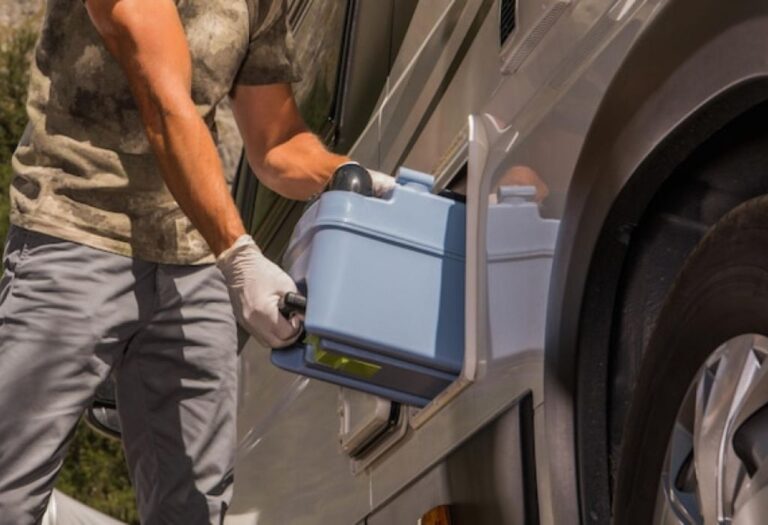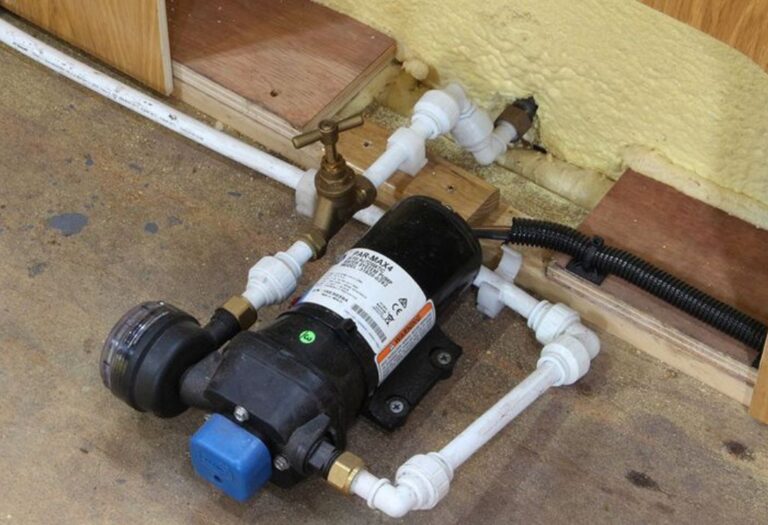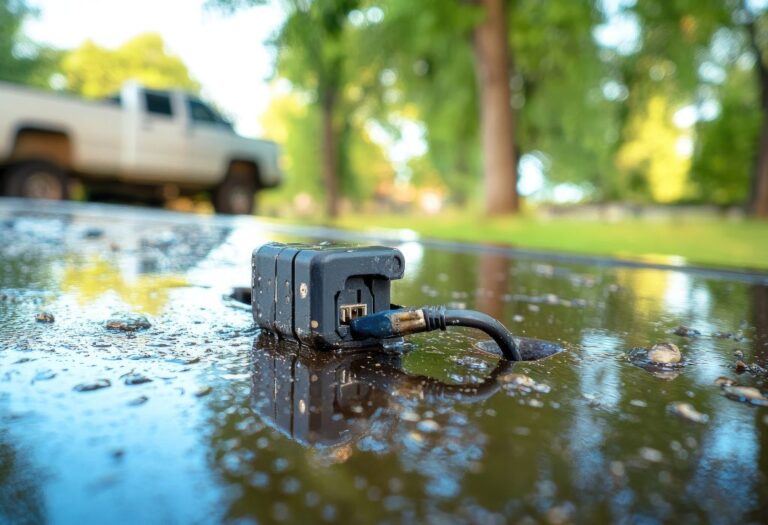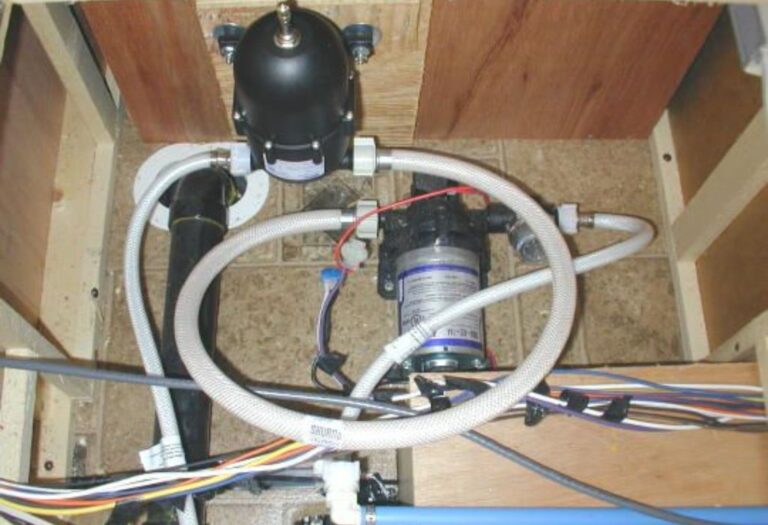Can You Run Bleach Through an RV Water Heater?
Every RV traveler wants their water system to stay clean and safe, but after long trips or months in storage, the water inside an RV heater can turn into a breeding ground for bacteria and foul smells. You might notice a sulfur-like odor when you turn on the faucet or see cloudy water coming from the hot-water side. That’s when many owners wonder — can you run bleach through an RV water heater to fix it?
When used correctly, bleach is one of the most effective ways to disinfect an RV’s plumbing system. It removes hidden biofilm, kills harmful microorganisms, and restores clean-smelling water. Yet, despite its cleaning power, bleach can also cause corrosion or damage certain materials inside the water heater if it’s not handled properly. That’s why understanding how and when to use it safely is essential.
According to RVIA maintenance data, up to 30% of RV water systems show bacterial buildup after just one season of inactivity. Another survey by Camping World found that improper sanitization methods — such as running undiluted bleach or skipping the flush cycle — are among the top causes of heater component failures. These numbers highlight how crucial it is to sanitize smartly, not aggressively.
In this guide, we’ll break down the science, risks, and step-by-step process behind running bleach through an RV water heater. You’ll learn how to use the correct ratio, when to bypass the tank, and how to flush it clean — keeping your RV’s hot-water system safe, efficient, and odor-free.
What Does It Mean to Run Bleach Through an RV Water Heater?

Running bleach through an RV water heater means circulating a diluted bleach solution through the entire freshwater system, including the heater tank. The purpose is to sanitize and kill bacteria or algae that grow inside when the RV is unused for weeks or months.
The RV’s plumbing system connects the freshwater tank, pump, plumbing lines, and heater in a loop. When sanitizing, bleach from the tank flows through this network and enters the heater unless it’s bypassed. Some systems have a bypass valve to avoid bleach exposure if the manufacturer recommends it.
What exactly happens when bleach flows through the heater?
The chlorine in bleach disinfects the interior surfaces, killing bacteria and eliminating algae or mold buildup.
Does bleach clean mineral scale or rust inside the heater?
No. Bleach removes biological contaminants but not mineral scale or rust; descaling requires vinegar or a cleaner designed for that.
Is it necessary to include the heater every time you sanitize?
Not always. If your hot water smells or shows discoloration, including the heater is smart; otherwise, bypassing may be safer.
How is bleach introduced into the system?
Bleach is diluted in the freshwater tank, then circulated through lines and heater using the water pump.
Can this process replace regular heater maintenance?
No. It complements routine care like draining, checking the anode rod, and cleaning mineral buildup.
Why RV Owners Consider Running Bleach Through the Water Heater
After long storage periods, stagnant water in the heater can develop a sulfur or rotten-egg smell. This often comes from bacteria reacting with the anode rod or trapped water residues. Bleach helps kill these organisms and removes foul odors, restoring freshness.
Owners also use bleach when de-winterizing their RVs, ensuring the plumbing system is safe before refilling it for the camping season. It’s a preventive measure that ensures potable, clean water.
Why do RV owners use bleach for sanitizing?
Because it effectively kills bacteria, fungi, and biofilm that cause bad odors and water discoloration.
Does it improve the water taste?
Yes. Proper flushing after sanitizing removes any bleach odor, leaving clean-tasting water.
Is it necessary every year?
Yes. Experts recommend sanitizing the freshwater system, including the heater, at least once annually.
Will it remove sulfur smell from hot water?
Yes. Bleach kills sulfur bacteria that thrive in warm, stagnant water.
Can bleach prevent algae growth in summer?
Yes. Regular sanitation prevents algae and microbial slime buildup during hot weather.
What Are the Risks and Manufacturer Warnings?
While bleach is excellent for sanitization, misuse can lead to corrosion or component failure. Manufacturers like Suburban and Atwood often caution users to bypass the heater during sanitization unless they specify it’s safe for bleach.
Bleach’s strong oxidizing nature can degrade rubber gaskets, seals, and anode rods if left in contact too long. It can also leave a lingering chlorine taste if not flushed thoroughly.
Can bleach damage water heater components?
Yes. Extended exposure can corrode metal parts and weaken rubber seals.
Do all brands approve using bleach?
No. Always check your heater’s owner’s manual; some explicitly advise against bleach exposure.
What if bleach stays too long in the tank?
It can damage the enamel lining, corrode the anode rod, and create a strong chlorine odor.
How can you minimize risk?
Use proper dilution (¼ cup per 15–16 gallons), limit dwell time to 12–24 hours, and flush thoroughly.
Can heat increase bleach damage?
Yes. Always let the heater cool before introducing bleach — never sanitize with hot water inside.
Step-by-Step Guide: How to Safely Run Bleach Through the RV Water Heater

Sanitizing the water heater requires care and correct proportions. Follow these simple but crucial steps to avoid harming your system.
- Turn off the heater and let it cool.
Wait at least an hour before draining to avoid burns and damage. - Drain the water heater completely.
Remove the drain plug or anode rod to release all water. - Close drains and fill the system.
Mix bleach at a rate of ¼ cup per 15–16 gallons of tank capacity in the freshwater tank. - Run the water pump.
Turn on faucets until you smell bleach from both hot and cold lines, confirming circulation through the heater. - Let it sit.
Allow the solution to remain in the system for 12–24 hours, no longer. - Flush thoroughly.
Drain the system, refill with clean water, and repeat until no bleach smell remains.
What’s the correct bleach-to-water ratio?
¼ cup of bleach for every 15–16 gallons of tank capacity ensures effective disinfection without corrosion.
How long should the bleach solution stay?
12–24 hours is sufficient to sanitize without damaging components.
How do you ensure bleach reaches the heater?
By opening hot water faucets during the sanitization process to circulate solution through the tank.
Can you use scented bleach?
Never. Only use unscented, regular household bleach (5–6% sodium hypochlorite).
What’s the best way to flush bleach out?
Run fresh water through the entire system until no chlorine smell remains.
When to Bypass the Water Heater (and When It’s Safe to Include It)
Some RV owners prefer bypassing the heater during sanitization to protect sensitive components. This is especially true for tankless models that use copper tubing or sensors that bleach may damage.
However, if your hot water smells or your heater hasn’t been cleaned in a year, it may be necessary to include it in the sanitization process.
What does bypassing mean?
It routes water around the heater instead of through it using a bypass valve.
When should you bypass?
When the manufacturer advises against bleach use or if your heater contains rubber or soft-seal components.
When is it safe to include the heater?
If your owner’s manual approves bleach or you’re sanitizing after long storage periods.
What are the benefits of bypassing?
It protects heater components and reduces the need for long flushing afterward.
What’s the drawback?
The heater interior may remain untreated, allowing bacteria to survive inside.
Myths and Common Mistakes RV Owners Make
Bleach sanitizing seems simple, but small mistakes can lead to big issues. Using too much bleach or failing to flush properly are common errors that cause bad taste or damage.
Another myth is that stronger bleach equals better cleaning. In truth, over-concentration shortens the lifespan of seals and fittings.
Does stronger bleach mean better results?
No. High concentration increases corrosion risk and leaves a strong odor.
Can you skip flushing afterward?
No. Residual bleach will harm seals and affect water taste.
Is bleach always the best sanitizer?
Not always. Alternatives like hydrogen peroxide-based RV sanitizers can also be effective.
Does the bleach smell mean it’s clean?
No. Smell isn’t proof of disinfection — proper dwell time and ratio matter.
Can bleach be added to hot water?
Never. Heat deactivates chlorine and accelerates chemical breakdown.
Aftercare: Flushing, Maintenance, and Sanitizing Frequency
After sanitization, flushing thoroughly is crucial. Leftover bleach can weaken seals or leave chlorine taste in the water.
Regular maintenance keeps your heater efficient and prevents microbial buildup. Periodically draining the heater and inspecting the anode rod extends its lifespan.
How many times should you flush after bleach?
At least twice — until all chlorine smell disappears.
How often should the water heater be sanitized?
Once a year or after any long storage period.
How to maintain clean water longer?
Use a carbon filter at your freshwater inlet and keep tanks full when in use.
What if bleach smell lingers?
Flush again with a water-baking soda mix to neutralize residual chlorine.
How to test water safety?
Taste, smell, and clarity — all should be clean and neutral before use.
Final Verdict and Expert Takeaways
So, can you run bleach through an RV water heater? Yes — but only if done carefully. Proper dilution, limited dwell time, and thorough flushing are key to success.
Bleach sanitization restores freshness, eliminates odor, and kills bacteria that can make your water unsafe. However, misuse can lead to corrosion or seal damage, so follow manufacturer guidance every time.
Is running bleach through the heater safe?
Yes, if you follow dilution and time guidelines precisely.
When should you avoid it?
If your heater’s manual warns against bleach or has delicate materials.
What’s most important for safety?
Cool the heater first, use proper ratios, and flush completely.
What’s the main benefit?
Clean, safe, odor-free hot water for your RV trips.
Final advice:
Read your RV manual, sanitize annually, and always use the right concentration — your water heater will last longer and deliver cleaner water on every journey.
I’m David R. Coleman, the founder, lead writer, and lifelong tool enthusiast behind GarageToolPro.com. With years of experience in automotive repair, woodworking, and home DIY projects, I created this platform to share practical tips, detailed tool reviews, and step-by-step guides that help mechanics, hobbyists, and homeowners get the job done right the first time.






